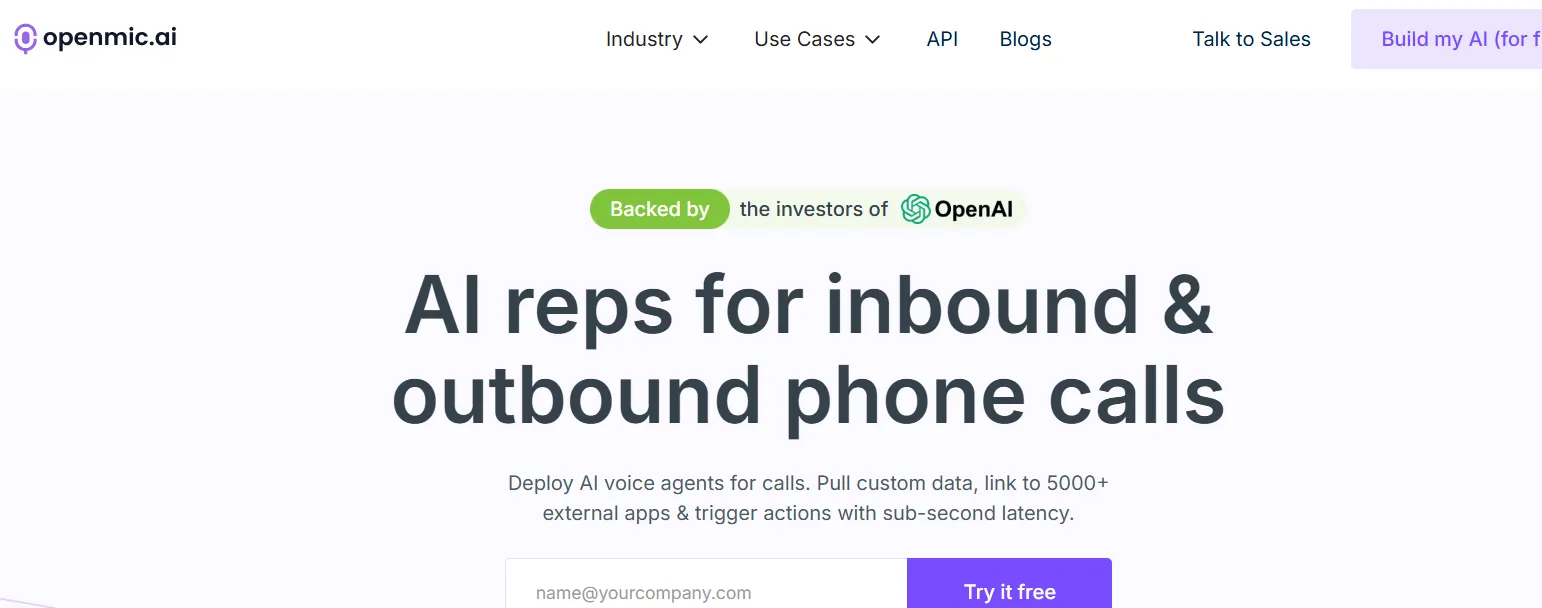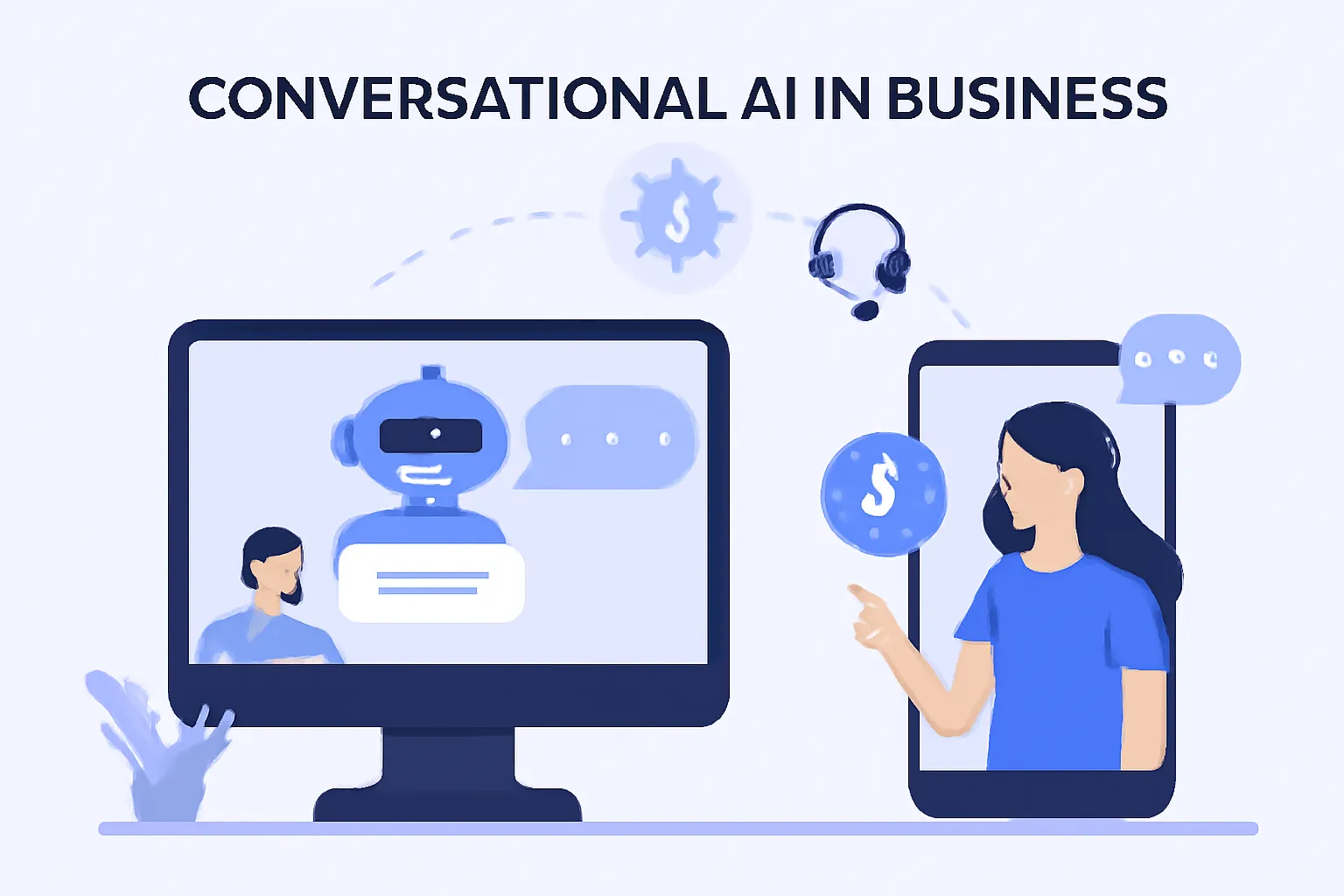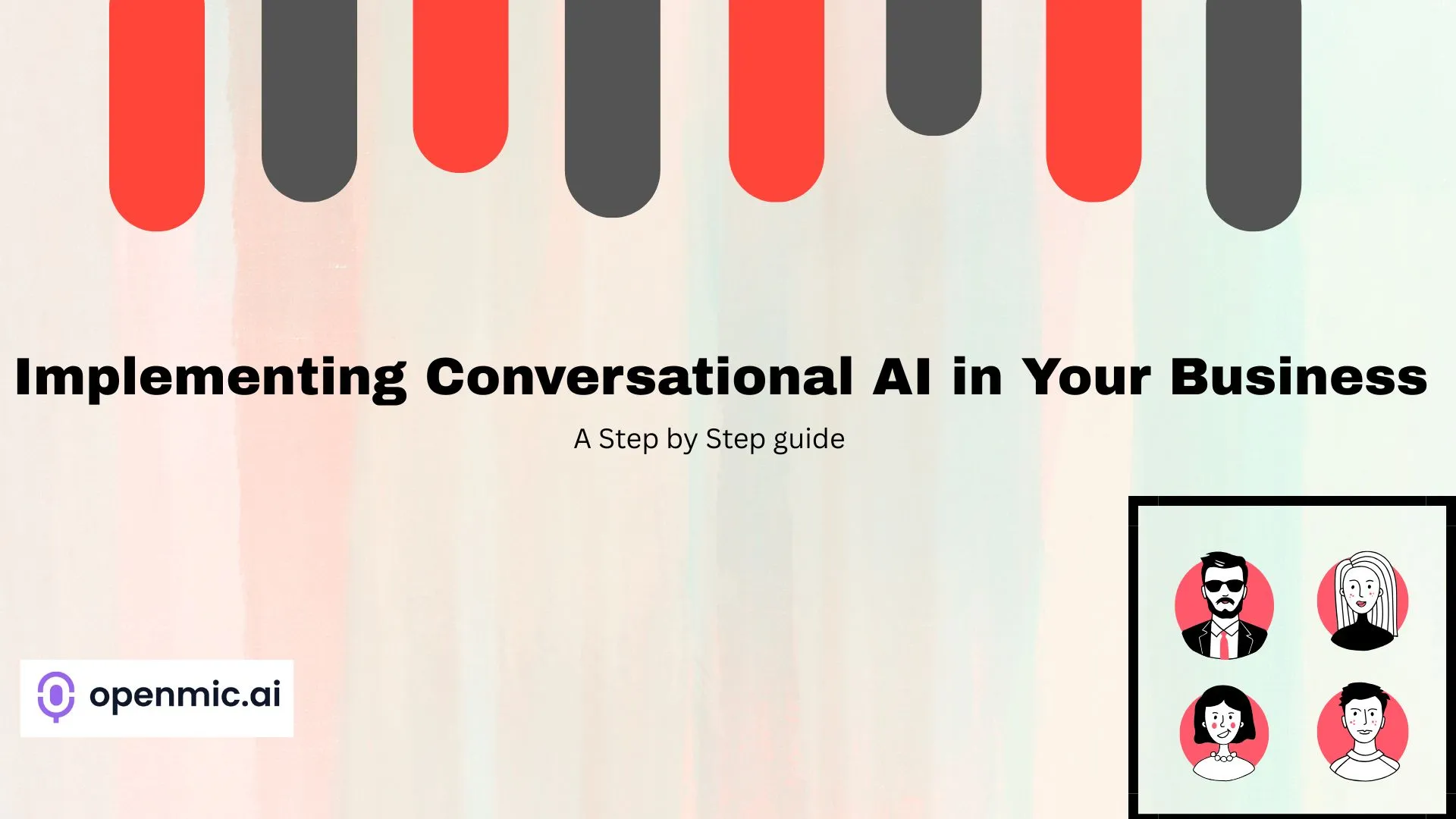In today’s digital age, businesses must adapt quickly to meet the growing expectations of their customers. Consumers are increasingly demanding faster, personalized, and seamless experiences, and companies need to deliver on these expectations. One of the most innovative solutions to this challenge is conversational AI. This technology empowers businesses to interact with customers in a natural, efficient, and automated way, whether through text-based chatbots or voice assistants.
What is Conversational AI?
Conversational AI refers to artificial intelligence technologies that enable machines to interact with humans using natural language. This interaction can take place via text (as in chatbots) or voice (like voice assistants). These AI-powered systems are designed to understand, process, and respond to customer queries in real-time, providing instant and relevant solutions.
From simple inquiries like checking an order status to complex tasks like troubleshooting or product recommendations, conversational AI can handle a variety of customer service tasks. This allows businesses to offer efficient, round-the-clock support without the need for constant human involvement.
Why Does Your Business Need Conversational AI?
As customer expectations evolve, businesses must find ways to meet their growing demand for fast, personalized, and efficient service. Conversational AI offers several benefits to companies looking to stay ahead:
- Constant Availability: Customers can interact with your business anytime, regardless of time zone, thanks to AI systems that work 24/7. Whether it’s late at night or early in the morning, your customers are always supported.
- Improved Customer Satisfaction: With immediate responses to customer queries, AI reduces wait times, leading to a better customer experience. Customers appreciate the speed and accuracy of AI-powered solutions.
- Cost Savings: Conversational AI automates many routine tasks such as answering frequently asked questions, appointment bookings, or order inquiries. This reduces the burden on human agents, allowing them to focus on more complex issues.
- Enhanced Scalability: As your business grows, your customer inquiries will increase. Conversational AI can handle a large volume of interactions simultaneously without compromising quality.
- Actionable Insights: Conversational AI collects valuable data from customer interactions. This information can be analyzed to gain insights into customer behavior, preferences, and pain points, helping your business make better decisions.
OpenMic: The Next Step in AI-Powered Conversations

If you’re looking to integrate conversational AI into your business, platforms like OpenMic provide an ideal starting point. OpenMic is a flexible and scalable conversational AI solution that integrates seamlessly with your existing systems. It enables businesses to set up and manage AI-driven conversations with ease, without needing technical expertise.
OpenMic.ai stands out because of its ability to integrate smoothly with major CRM platforms like Salesforce and HubSpot, ensuring personalized and data-driven interactions. It also offers an intuitive user interface, making it easy for businesses to design conversation flows, train the AI, and continuously optimize its performance.
With OpenMic, you can offer 24/7 support, drive sales, and enhance customer satisfaction—no matter the size of your business. Its advanced NLP capabilities ensure that customer interactions are natural and effective, enabling you to scale operations as your business grows.
How to Implement Conversational AI in Your Business

1. Identify Your Business Needs
Before diving into the world of conversational AI, identify the areas where it can be most beneficial. Whether it’s answering common customer queries, booking appointments, or providing personalized product suggestions, conversational AI can be tailored to suit your specific needs.
- Customer Support: Handle inquiries, complaints, and troubleshooting.
- Sales: Guide customers through the purchasing process with personalized recommendations.
- Marketing: Use AI to send personalized messages and promotions based on customer behavior.
2. Choose the Right Platform
There are a variety of platforms available that offer conversational AI tools. When selecting one, consider:
- Features: Look for a platform with strong NLP (Natural Language Processing) capabilities, support for multiple languages, and options for integration with your existing systems.
- Ease of Use: Some platforms offer low-code or no-code interfaces that allow for quick implementation without requiring technical expertise.
- Support and Integration: Choose a platform that integrates easily with your CRM systems, payment gateways, and other tools.
OpenMic provides an ideal choice, offering seamless integrations with CRM platforms, flexible customization options, and robust AI-driven features. This ensures that your AI interactions remain efficient and personalized.
3. Design Your AI Interactions
It’s essential to map out the flow of interactions between customers and your AI system. This process involves:
- Creating Conversation Flows: Design simple and intuitive conversations that lead customers to the information or service they need.
- Personalizing Responses: Use data such as past interactions and preferences to tailor responses and make the experience more personalized.
- Incorporating Conditional Logic: Make the AI more intelligent by incorporating decision points based on user behavior or input.
The goal is to ensure your AI can handle a wide range of scenarios while keeping the interaction smooth and natural.
4. Train Your AI
For conversational AI to work effectively, it needs to be trained on real data. This involves:
- Feeding the AI with examples of customer interactions: Include different scenarios, languages, and tones of voice to make sure the AI can understand and respond appropriately.
- Teaching the AI to recognize intent: Whether the user is asking for product recommendations or checking the status of an order, the AI needs to understand the context behind the question.
The more comprehensive the training data, the better the AI will be at providing accurate and relevant responses.
5. Integrate with Your Business Systems
To maximize the benefits of conversational AI, it must be able to interact with your existing systems. This might include:
- CRM Integration: Connect the AI to your CRM (like Salesforce or HubSpot) to ensure it has access to up-to-date customer data.
- Payment and Booking Systems: If your business involves transactions or appointments, integrate payment gateways (like PayPal) or scheduling tools (like Calendly) to provide seamless service.
Integration is crucial for creating a cohesive and efficient customer experience.
6. Test and Optimize
Before launching, thoroughly test the AI system to ensure it works as expected. Testing should cover:
- Functionality: Does the AI respond accurately to all types of queries?
- User Experience: Is the conversation flow smooth and easy to follow?
- Scalability: Can the system handle a large volume of interactions at once?
You’ll also want to regularly monitor the system after launch, gathering feedback from customers to fine-tune the AI and improve performance over time.
7. Launch and Monitor Performance
Once everything is tested, you can go live. Start with one channel (like a website chatbot) and monitor key performance indicators such as:
- Response Time: How quickly does the AI respond to customer queries?
- Customer Satisfaction: Are customers happy with the AI interactions?
- Conversion Rate: Does the AI effectively guide customers toward completing their desired action (e.g., making a purchase, booking an appointment)?
Use analytics to track performance and make improvements where necessary.
Best Practices for Successful AI Implementation
- Keep Conversations Simple: Don’t overwhelm your users with overly complex dialogues. Focus on keeping the conversation clear and natural.
- Prioritize Customer Needs: Design your AI to address customer needs first, making their experience as easy and intuitive as possible.
- Plan for Escalation: While AI is powerful, it won’t be able to handle everything. Set up workflows to easily transfer complex queries to human agents when necessary.
Common Mistakes to Avoid
- Overloading AI with Too Many Features: Start with a few core functionalities and expand as you get feedback from users. Trying to do too much at once can overwhelm the system and reduce its effectiveness.
- Underestimating the Need for Good Data: High-quality training data is essential for AI to provide accurate and meaningful responses.
- Failing to Monitor and Optimize: Conversational AI is not a "set it and forget it" solution. Regularly update and refine the system based on user feedback and performance metrics.
Conclusion
Conversational AI is no longer a luxury, but a necessity for businesses aiming to meet modern customer expectations. With its ability to provide 24/7 support, reduce operational costs, and offer valuable insights, conversational AI is an invaluable tool. By following this guide and leveraging powerful platforms like OpenMic, you can enhance customer interactions and drive business growth. Start your journey today with OpenMic, and see how conversational AI can revolutionize your business!development.
Explore the various blogs to Know more about OpenMic:
- The Future of Healthcare: How AI Voice Agents Are Transforming Patient Care in 2025
- How AI Voice Agents Are Revolutionizing Restaurant industry & Enhancing Customer Experience
Explore related blogs
.png)
Voice AI for Mass Tort Lawyers: How Conversational AI Is Revolutionizing Case Intake & Client Engagement
.png)
Top 5 AI Answering Services for Law Firms in 2025 (24/7 Reception & Intake)
.png)
Top 5 White-Label Voice AI Platforms in 2025 (Best for Agencies & SaaS Providers)
Let AI Handle Your Phones So You Can Focus on Growth
Start your free trial and see how OpenMic’s AI voice agents can streamline calls, boost conversions, and deliver fast, 24/7 customer service — without hiring more staff.







.svg)